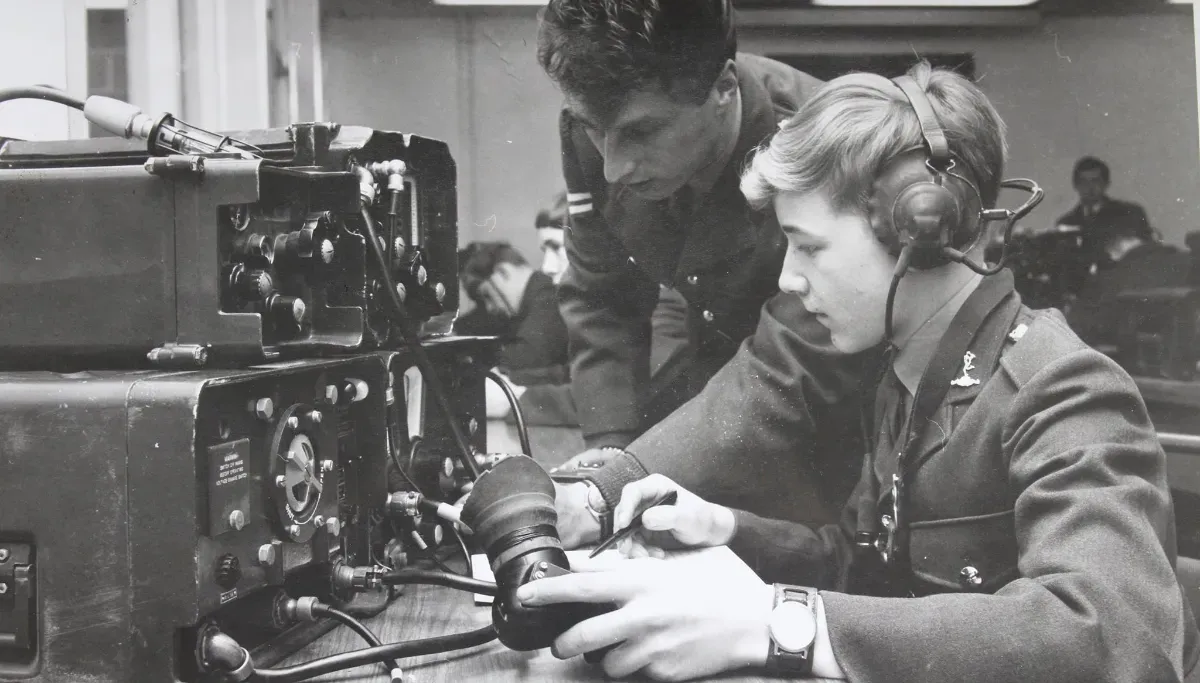The Making of Military Tradesmen

Army Apprentices Colleges
The institutions known as Army Apprentices Colleges were established in 1966, but their roots stretched back to just after the First World War. Recognising the challenge of recruiting skilled tradesmen, the Army Council decided to implement a system for training boys straight from school. These establishments began as Boy's Technical Schools, later becoming Army Technical Schools (Boys), before evolving into the Apprentices Colleges of my era.
When I arrived at AAC Harrogate in May 1970, the college was organised into five squadrons: Scott, Rawson, Penney, Phillips, and Bradley. Radio Telegraphists like me were housed in Scott and Rawson Squadrons, Technicians went to Penney and Phillips, whilst Linemen and B Operators found themselves in Bradley.
We were called Apprentice Tradesmen, or A/Ts for short. Those who made the grade could rise through the NCO ranks, potentially reaching Sergeant Major. It goes without saying that I remained firmly at the A/T level – essentially a glorified private – for my entire two years there.
Life in the Barracks
New recruits were initially housed together in the same rooms. After the first term, we were released into the "general population", I make it sound rather like a prison, and shared accommodation with lads from various other terms, not just our own intake.
A Bird's Eye View of Our World

An aerial view of the Army Apprentices College Harrogate circa 1970
The aerial view above shows the layout of our temporary home. At the centre lay a large parade ground, the focal point of our daily military life. At the bottom of the parade ground stand three distinctive pyramid-shaped buildings, they are the churches representing the Church of England, Catholic Church, and "Other Denominations." Attendance at one of the Sunday services was compulsory, even for professed atheists.
The five three-storey barrack blocks are visible at the top of the photograph, arranged in an S-shape. The four buildings on the left of the central square housed our classrooms, with what I believe was the motor pool occupying the building at the bottom of this block.
The gym and swimming pool were located above and slightly left of the classroom blocks, along with two squash courts in the same vicinity. For sport and recreation, there were two rugby pitches and three football fields which can be seen at the bottom of the photograph. The main entrance lay off to the right, in line with the churches, with the administrative buildings clustered around and below this area.
A Civilised Kind of Discipline
Looking back now, I'd describe the college as rather like those expensive public boarding schools that wealthy families send their children to, but without the buggery or sadistic teachers. Discipline was strict, obviously, it was the bloody army, after all, but it was never extreme or arbitrary.
There was no corporal punishment. The permanent staff, the adult soldiers responsible for our training, would sometimes threaten colourfully to "rip your arm off and beat you to death with the bloody stump," but they never actually laid a finger on us. There was none of the psychotic abuse so memorably depicted by R. Lee Ermey's Drill Instructor in Full Metal Jacket.
The system was firm but fair, designed to turn scruffy teenagers into skilled tradesmen and disciplined soldiers without breaking our spirits in the process.
Navigating the Labyrinth of Memory
Before we dive into my Harrogate stories, a gentle disclaimer:
These events unfolded some 55 years ago, and memory, as I've discovered, is a delightfully slippery thing, more impressionist painting than high-definition photograph. What I recount here is my truth, filtered through half a century of living, laughing, and occasionally forgetting where I put my glasses. Others who shared these moments might remember them very differently, and that's perfectly fine. Perhaps we're all just living our own unique versions of history.
My stories, much like life itself, rarely follow strict chronological order. Think of it less as a carefully curated timeline and more as a meandering pub conversation where one memory unexpectedly sparks another. I might start writing about CSM Bill ripping my perfectly made bed to bits and suddenly find myself talking about Clive smoking pot in the quiet room, or some training exercise disaster. As you'll see in my other posts, I have a tendency to start down one path and cheerfully veer off into something completely different.
Adding to this delightful chaos is the fact that names from so long ago often lurk in the hazier corners of my mind. I might mix people up, or recall faces without their proper labels. Chalk it up to the grand adventure of getting older – which is a bastard, but certainly keeps things interesting.
So settle in. What follows is shaped by the quirks of ageing memory, where truth lives somewhere in the magic of imperfect recollection.